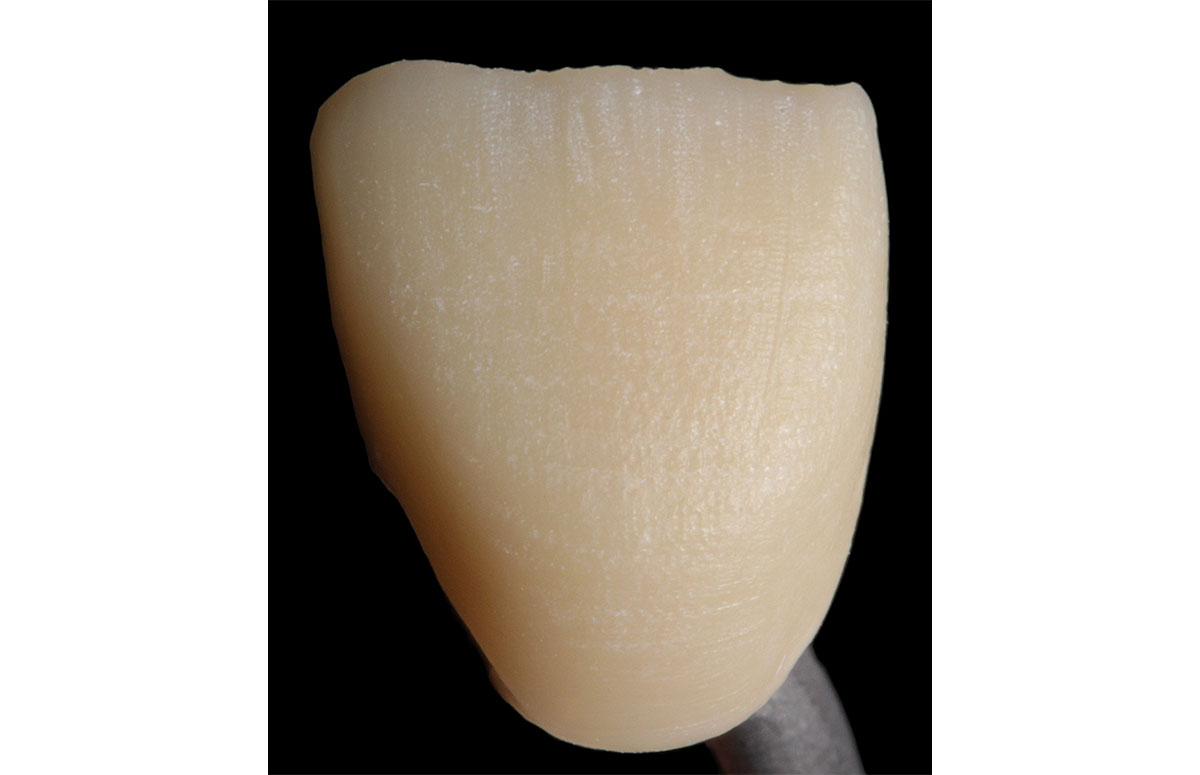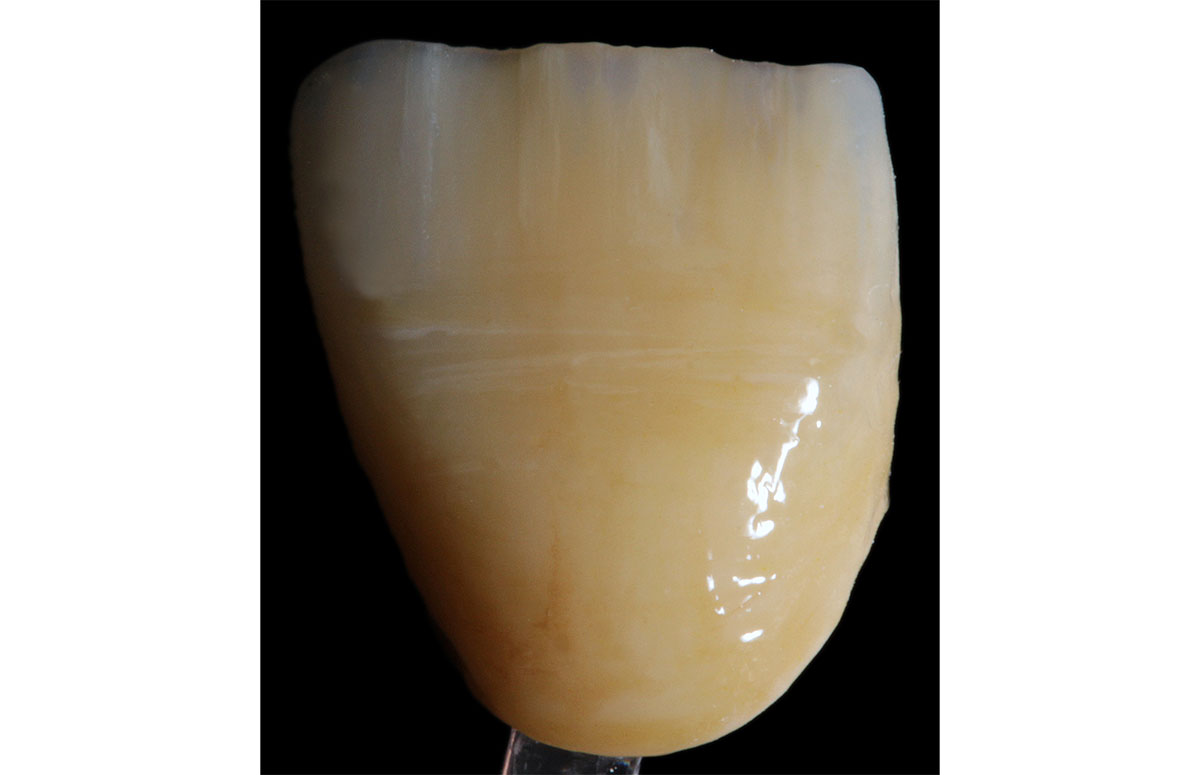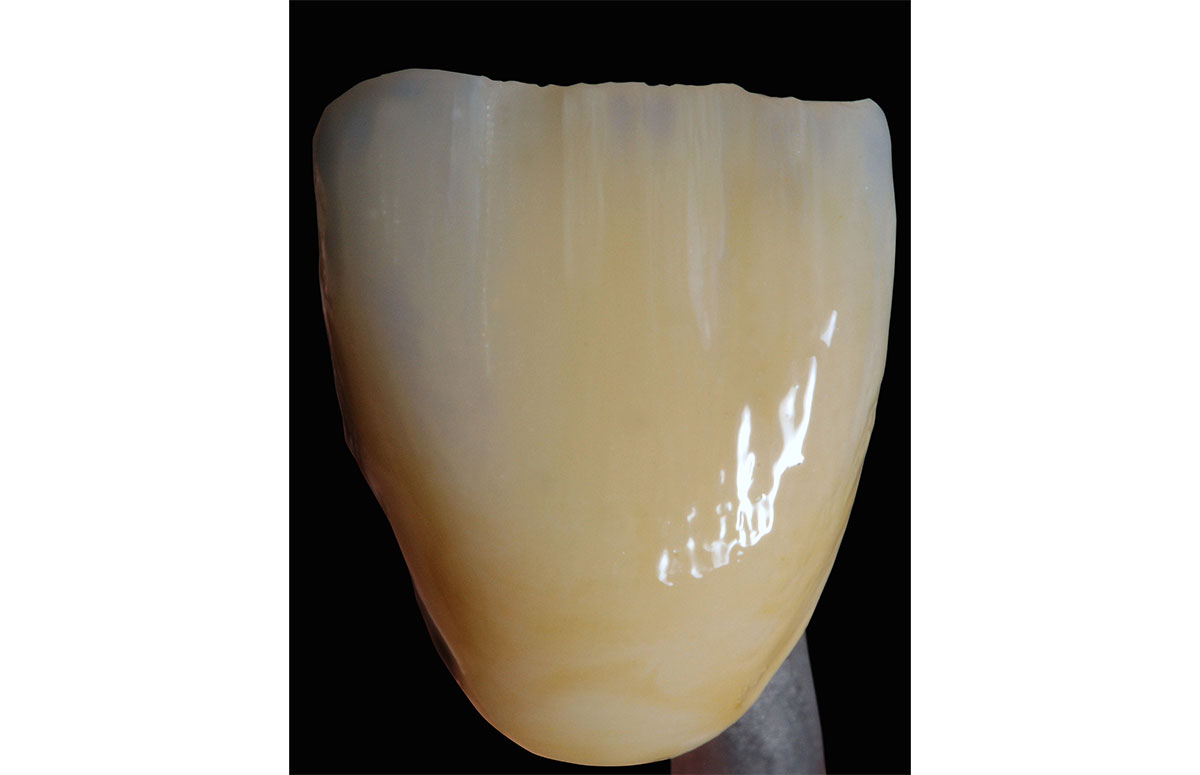Jürgen Freitag, Master Dental Technician, Bad Homburg, Germany
A pleasant surprise:
The VITA AKZENT LC composite stain system enables completely new possibilities for individual shade effects
"Life is like a box of chocolates, you never know what you're gonna get", says Forrest Gump in the movie of the same name, during his monologue with passersby who happen to sit next to him. It may not be a box of chocolates, but the VITA AKZENT LC composite stain system (VITA Zahnfabrik, Bad Säckingen, Germany) unexpectedly made its way to Bad Homburg to the laboratory of master dental technician Jürgen Freitag. He wasn't exactly sure what it was he had received. He had no real idea what he should do with the new composite stains: "I wasn't interested in using stains of this kind. I thought they're no use to anybody!" But once he tried them for the first time, he realized just how wrong he had been. He liked what he saw, and it also enabled completely new possibilities for characterization and individualization of composites, polymers and hybrid ceramics. Find out in the following interview how someone who started out as a sceptic. quickly become a true fan.
To begin with, you didn't really know what VITA AKZENT LC composite stains had to offer. What was your experience in the end?
Jürgen Freitag, master dental technician: I first tried out the composite stains without any expectations on a long-term temporary. I layered the tooth using VITA VM LC flow BASE DENTINE A3 on a non-precious metal coping. Then I wanted to know what was possible with VITA AKZENT LC. The experiment was astonishing: By applying just a small amount of material, I was able to achieve incredible effects. With this system, the minimum was the new maximum. The composite stains were cured after 90 seconds in a light furnace. After application of VITA AKZENT LC GLAZE on the surface, a uniform shine was achieved after a further 90 seconds in the light furnace and the long-term temporary was ready. I had created a play of light full of effects, but without using enamel materials. I was really pleasantly surprised.
How did you approach characterization of the long-term temporary? What did you need to pay attention to in this respect?
Freitag: In general, care should be taken when using the shades, as they are very intense. With the VITA AKZENT LC EFFECT STAINS blue, grey and a touch of purple, I simulated translucency in the incisal area and on the margins where it normally isn't possible. For cracks in the enamel, I created tiny notches and simply filled them with russet or white. This worked really well with the material, as it is a liquid. I was also able to reproduce fluorosis with white. I used orange and khaki to give the dentine core a lifelike shimmer. A hint of khaki was also used circularly in the cervical area. I could see no evidence of a smear layer after glazing and final curing.
What use cases can you imagine for VITA AKZENT LC composite stains in the future?
Freitag: Yes, this stain system really gives you ideas (laughs). A lot more is possible, that's for sure. Apart from long-term temporaries, I will definitely use the composite stains for telescopic crowns in the future. As primary and secondary crowns are used here, there is already very little space for the composite veneer. In such cases, I would use VITA AKZENT LC for internal staining and cover it with a thin layer of enamel composite in order to also shield it from natural abrasion over the long-term clinical course. In this way, I can create individual shade effects and natural translucency on the dentin core without wasting space. In other words, I can achieve the maximum in terms of results with just minimal layering.

The long-term temporary with a non-precious metal coping and dentin core made from VITA VM LC flow BASE DENTINE A3.

Cracks and staining created using the VITA AKZENT LC EFFECT STAINS russet, khaki and white.

Natural translucency created using blue, grey and purple VITA AKZENT LC EFFECT STAINS.
